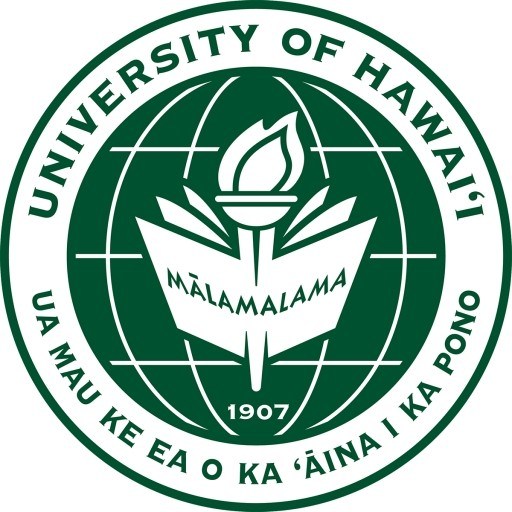Photos of university / #uhmanoanews
The Fashion Design and Merchandising program at the University of Hawaii at Manoa offers students a comprehensive education that combines creativity, technical skills, and business acumen to prepare them for successful careers in the dynamic and evolving fashion industry. This interdisciplinary program emphasizes the development of both innovative design techniques and strategic merchandising practices, allowing graduates to excel in various roles within fashion brands, retail environments, and entrepreneurial ventures. Students have access to state-of-the-art facilities, including design studios, sewing labs, and computer-aided design (CAD) software, fostering hands-on learning experiences that bridge theory and practice. The curriculum covers core topics such as fashion illustration, textile science, apparel construction, fashion history, trend forecasting, marketing, and retail management. Through a combination of coursework, industry internships, and collaborative projects, students gain a deep understanding of the entire fashion supply chain, from concept to consumer. The program also emphasizes sustainability and ethical sourcing, reflecting Hawaii’s commitment to environmentally responsible practices. Faculty members are experienced professionals and scholars who bring real-world insights into the classroom, encouraging students to develop innovative portfolio projects that showcase their individual style and technical expertise. The program prepares graduates for diverse career opportunities including fashion designer, apparel stylist, visual merchandiser, product developer, fashion buyer, and retail manager. With a focus on cultural diversity and local influences, the program nurtures creativity rooted in Hawaii’s unique cultural identity, while also addressing global fashion trends. Students are encouraged to participate in industry events, fashion shows, and networking opportunities that enhance their professional development. The University of Hawaii at Manoa’s Fashion Design and Merchandising program aims to cultivate forward-thinking professionals who are prepared to make meaningful contributions to the global fashion industry while drawing inspiration from Hawaii’s vibrant cultural legacy.
The FDM curriculum provides students with the knowledge and skills needed for career positions in apparel- and fashion-related fields. Students learn fashion industry operating methods; develop buying and merchandising plans; study textile fibers and fabrics; create fashion apparel lines; examine Hawaiian, Asian, and western costume artifacts; analyze the effects of social, political, and economic conditions on local, national, and global industry operations and consumer needs; and study current concerns relating to social responsibility, ethical issues, and environmental impacts as these relate to fashion businesses and consumers.
Courses cover these and related topics:
- Fashion trend analysis
- Fashion sketching
- Textile properties
- Apparel design and construction
- Retail buying and merchandise management
- Fashion promotion and fashion show production
- Costume history
- Social and cultural aspects of dress
- International trade issues.
Requirements
- University of Hawaiʻi System Admission Application
You may apply online. Please read the instructions carefully.
- Application Fee: $70 U.S.
The application fee is nonrefundable and nontransferable and valid only for the semester indicated on the application. Please send a money order or check payable to the University of Hawaiʻi or download the credit card authorization form (PDF).
- Official Secondary and Post-secondary School Transcripts
All official transcripts, examination certifications (e.g., General Certificate of Education) and other documents showing all high school and any completed post-secondary work must be submitted to the Office of Admissions. All official transcripts must be mailed directly by the institution or Ministry of Education to the Office of Admissions. Documents mailed or hand carried by you or anyone else will not be accepted as official or used for admission consideration.
Secondary school transcripts must include a list of courses taken and grades/internal marks received each year, class rank for the last four years of secondary school, and an explanation of the school's grading system. If transcripts with annual internal marks are unavailable directly from the school, you may photocopy your mark sheets or grade reports and have them certified by a school official who verifies that a transcript is otherwise not available.
Post-secondary school transcripts must include a list of courses taken, grades/marks received, number of hours spent in each class per term, explanation of the school's grading system, and your rank in class. You may also be asked to provide course descriptions and a list of text books used in each course.
Photocopies of external examination certificates must be certified by a school or Ministry of Education official or issued by the examining board and be sent directly to the Office of Admissions.
All documents must be in English or accompanied by an English translation that has been certified by a school or Ministry of Education official.
- Official Test Scores
You must take either the SAT, the American College Test (ACT), or the Graduate Record Examination (GRE) and request that the results be forwarded to UH Mānoa. Our college codes are SAT/GRE 4867 and ACT 0902. Ask your school counselor for more information on testing locations and deadlines or visit the SAT website, ACT website, or GRE website. If the test is not available to you in your area, the SAT/ACT may be substituted. Please contact the Office of Admission for more information.
Undergraduate applicants who have earned 24 or more transferable semester credits at the time of application are not required to submit test scores. The credits must be from courses comparable to those offered at UH Mānoa (excluding English Language Institute and Second Language Studies courses) and have been taken at a recognized, regionally accredited college/university in the United States or an institution recognized by the Office of Admissions.
The GRE can be taken when SAT or ACT tests are unavailable.
- Official Test of English as a Foreign Language (TOEFL) Scores
All applicants whose native language is not English must submit an official TOEFL score report from a test taken within the last two years. An official TOEFL score report must be sent directly from the Educational Testing Service to the Office of Admissions. Our college codes are institution 4867, department 00.
TOEFL Exemptions
The following types of applicants are exempt from taking the TOEFL:- Received a D or better grade for UH Manoa English 100 equivalent (as determined by the UH Manoa Office of Admissions).
- Received an SAT Critical Reading score of 510 or better.
- Received an ACT English + Reading score of 44 with no score below 20.
- Received an English Language Performance Test (ELPT) score of 950 or better (students attending U.S. high schools only).
- Received an International English Language Testing System (IELTS) score of 5.0 or better (must be academic section).
- Completed at least 3 years of high school in the U.S. at the time of application with a cumulative grade point average of 3.2 and SAT Critical Reading score of 460.
- Completed the last 6 years of secondary/post-secondary education in American Samoa.
- Meet any of the English Language Institute Placement Test Exemptions listed below .
- English Language Institute Placement Test
If you are admitted and your native language is not English, you may be required to take the UH Mānoa English Language Institute placement test.
English Language Institute Placement Test Exemptions
The following applicants are exempt from taking the ELI placement test:- Native speakers of English.
- Received an SAT Critical Reading score of 540 or better.
- Received an ACT English + Reading score of 48 with no score below 21.
- Received a GRE Verbal Reasoning score of 151 or better.
- Received a Test of English as a Foreign Language (TOEFL) score of 600 or more (paper-based) or a score of 100 or more (internet-based).
- Received an International English Language Testing System (IELTS) score of 7.0 or better (must be academic section).
- Completed 60 transferable semester credits with a GPA of 2.0 or better from a regionally accredited U.S. institution.
- Completed all degree coursework at and earned an Associate of Arts degree from a University of Hawaiʻi Community College.
- Completed the last 6 years of secondary/post-secondary education in Australia, Canada (except Quebec), Guam, Ireland, New Zealand, the United Kingdom, or the United States.
- Completed all degree coursework at and earned a Bachelor's or higher degree from a regionally accredited U.S. institution or a recognized college or university in any of the countries listed above (as determined by the UH Mānoa Office of Admissions).
- High school or any college transcripts, translated and certified by a school or U.S. consular official.
Scholarships
- New Warrior Scholarships
- Mānoa Academic Merit Scholarship
- Global Education
The Fashion Design and Merchandising program at the University of Hawaii at Manoa offers students a comprehensive education in the fields of fashion creation, branding, product development, and retail management. The program aims to prepare students for diverse careers within the fashion industry, combining artistic creativity with business acumen. Students gain hands-on experience through studio courses that focus on fashion illustration, pattern making, sewing techniques, and computer-aided design (CAD). The curriculum also incorporates courses in textiles, fashion history, and contemporary fashion trends, providing a well-rounded background essential for innovative design and effective merchandising.
In addition to creative coursework, the program emphasizes the importance of understanding the global fashion market, supply chain management, marketing strategies, and consumer behavior. Students are encouraged to develop their personal style and voice while considering sustainability and ethical practices in fashion. The program often collaborates with local fashion industries and hosts industry events, providing internship opportunities and real-world exposure that facilitate networking and job placement after graduation.
The faculty members are experienced professionals and scholars dedicated to mentoring students and advancing research in fashion and apparel. The department facilitates access to state-of-the-art facilities, including design studios, pattern-making labs, and digital design suites, enabling students to perfect their craft using current technology. Students are also encouraged to participate in fashion shows, competitions, and exhibitions, showcasing their work both locally and nationally.
Graduates of the program typically pursue careers as fashion designers, merchandise buyers, retail managers, visual merchandisers, and brand strategists. The program's integration of creative, technical, and commercial skills ensures graduates are well-prepared to succeed in a competitive industry and to adapt to evolving fashion trends. Overall, the Fashion Design and Merchandising program at the University of Hawaii at Manoa offers an enriching educational environment rooted in innovation, sustainability, and cultural diversity, reflecting the unique context of Hawaii's diverse influences and global perspectives in fashion.


